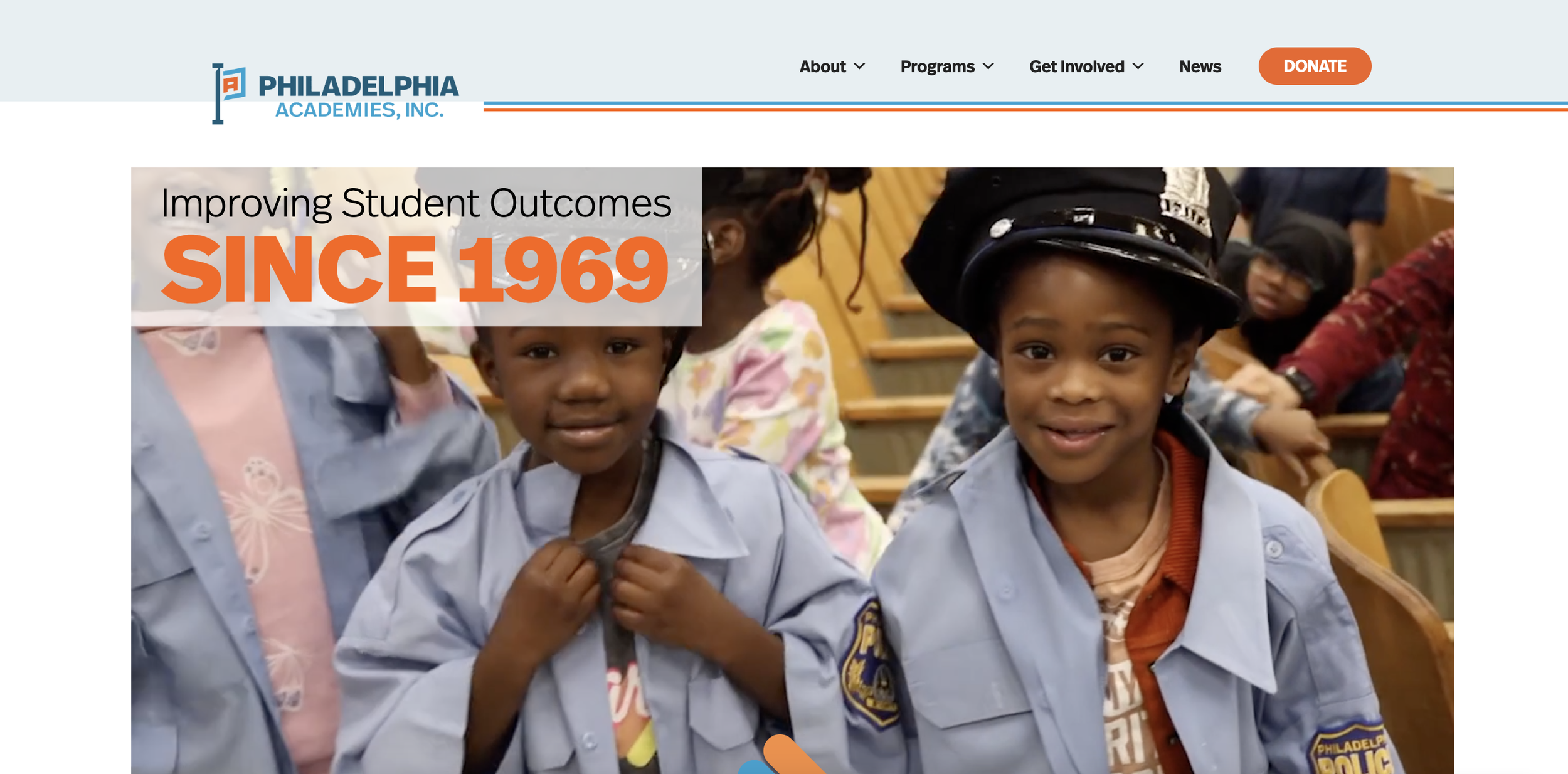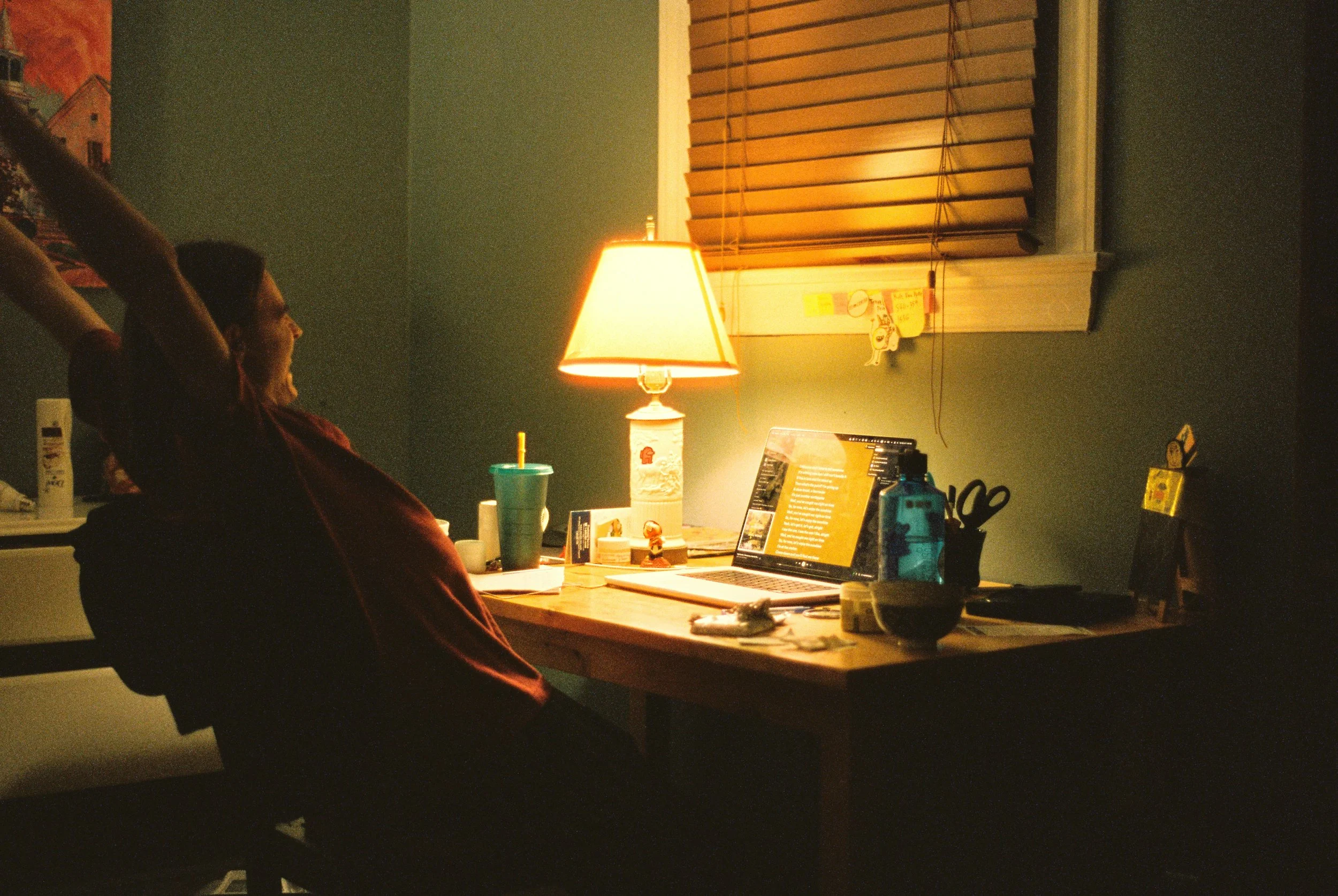The Roadmap to Redesign: Insights from Our Design Process
Written by Yasmeen Dahiya, based on an interview with Whitney Larson
Photo by Venti Views
More and more organizations are turning to AI for design. And while these tools can be useful, nothing replaces the creativity and care that comes from human design thinking. In sectors like science, education, and public health, there’s often a lot of information to convey and even more at stake. Thoughtful design helps people instantly understand who you are, what you stand for, and why they should trust you.
We sat down with our lead designer, Whitney Larson, to unpack what makes for effective design; how she approaches each medium; and what we learned from our work with the Association of Environmental & Engineering Geologists (AEG), Philadelphia Academies, and others.
Start with clarity, not color
"Before design begins, I ask: Who are we trying to reach, and what do we want them to learn or experience?" says Whitney. "Once I understand the audience and what success looks like, the creative direction starts to come together naturally."
Whether it’s a flyer, a website, or a 40-page publication, Whitney approaches each redesign with the same foundation: listen, clarify, then create with purpose.
You might be thinking, “well, obviously”—but you’d be surprised how many teams dive straight into visuals without first getting clear on the strategy. We like to start with a Phase 0 consultation to explore what we want people to think, feel, or do after interacting with the brand.
“Modernize” and “refresh” are common goals, but they only work when they’re tied to something deeper. The clearer you are on the message, the easier the design decisions become, and the more effective the final product is.
Design as a tool for action
Design shapes how people feel before they start reading. Small choices like font, color, and spacing can make the difference between a message that lands and one that doesn’t.
"Design sets the tone. If we want people to act, we need to make sure they feel welcomed, informed, and confident in what they're seeing."
That starts with knowing what your audience cares about. Especially for dense science reports or public health announcements, a designer’s job is to pull out the most impactful snippets that make people want to keep reading. "You look at a big data dump and think about what will catch the reader’s eye," she says. "The more specific and detailed you get, the easier it is to design something that’s both accurate and engaging."
Boman Communications designed Philadelphia Academies’ 2024-2025 Annual Report
The power of thoughtful design
Design isn’t just about how something looks. It’s about how it works. Whitney describes design as a vehicle for trust. "Especially in public health or science spaces, where people are often overwhelmed with data, good design distills information and helps the important parts stand out."
When we worked with Philadelphia Academies (PAI), our goal wasn’t to overhaul their brand—it was to bring more energy and clarity to their existing materials.
"They already had a strong mission and logo—we simply made their website more effective by addressing the hierarchy of information," Whitney notes. "We focused on how to weave together the story of their work through all their public facing brand elements.”
We helped them elevate their messaging so it felt more human, more connected, and easier for audiences to understand.
Boman Communications redesigned Philadelphia Academies’ website
Redesigning with intention: Lessons from AEG
When AEG came to us to redesign their quarterly publication, the goal wasn’t a total rebrand. Instead, we focused on refining the layout to create more space for photos and reader-friendly formatting that could support everyone from students to senior professionals.
"We updated the fonts, and structure so the visuals could shine and the content could breathe," says Whitney. "It was a lot of cleaning up and simplifying; that simplicity made the final product feel fresh, modern, and easier to engage with."
Once the new publication was revealed, AEG saw a noticeable increase in article submissions and topic ideas. "When people saw their chapter’s work highlighted, it created a contagious enthusiasm," Whitney says. An effective redesign breathes new life into an old product.
Boman Communications redesigned AEG’s newsletter
Balancing precision with creativity
Working within strict brand guidelines or tight timelines? Whitney's advice is to prioritize what matters most.
"I always look for the one piece that will have the biggest impact," she says. "When you focus creative energy on that anchor, everything else follows its lead."
And while some clients don’t see the middle stage of brainstorming or sketching, that time to explore is what makes the final product feel cohesive and intentional.
Thinking of a redesign? Start here.
Whitney’s advice for orgs considering a redesign? Start with the message.
"A lot of people jump straight to visuals. The most successful designs come from knowing what you want people to know, feel, and do after they engage with you."
Once you know that, the rest starts to fall into place.
Photo by Mykyta Kravčenko
Let’s make your designs work.
We offer design services that support organizations doing meaningful work in science, education, and public health. From branding to publications to websites, we help you communicate your mission effectively.
Ready to explore what’s possible?






